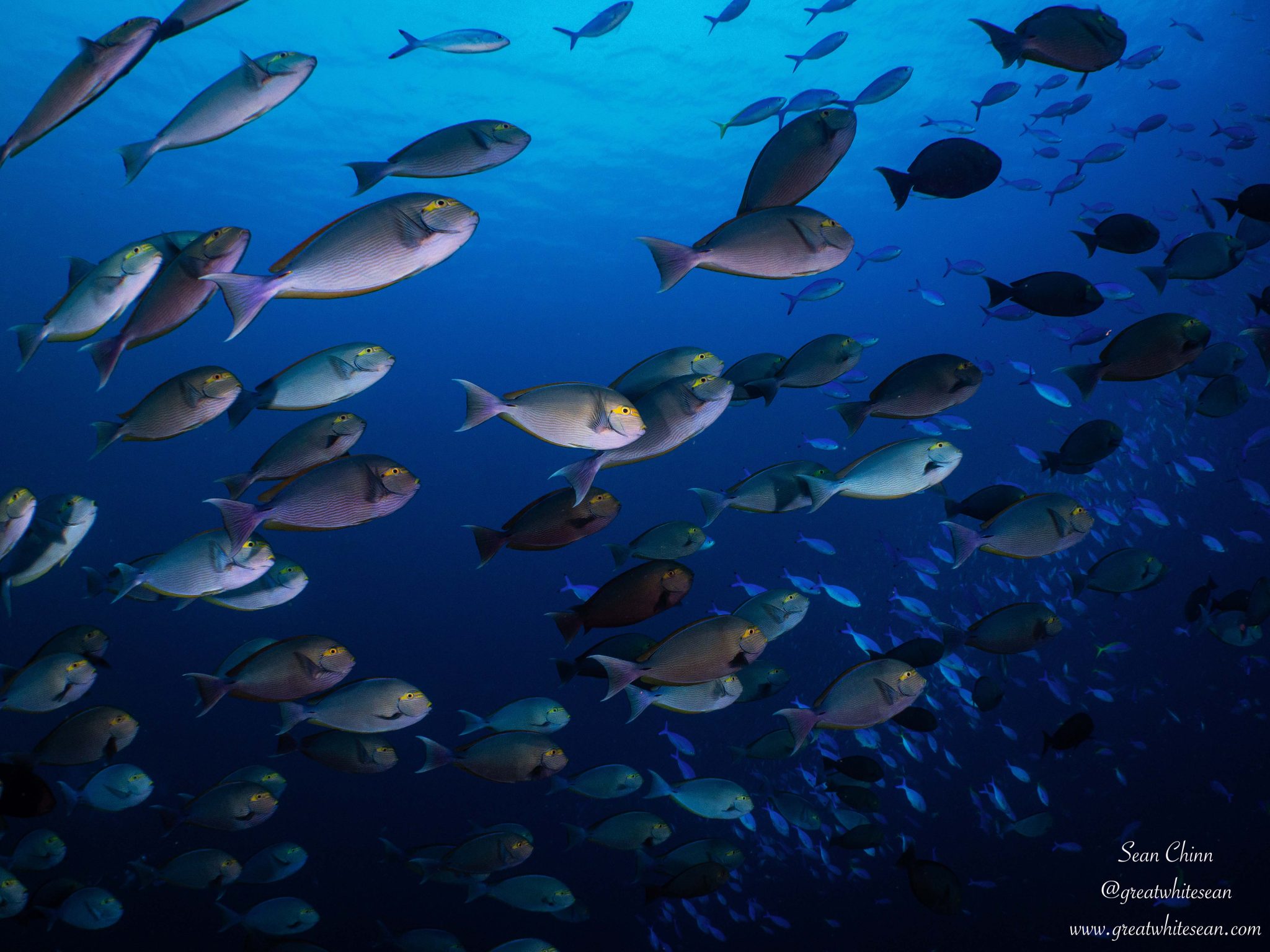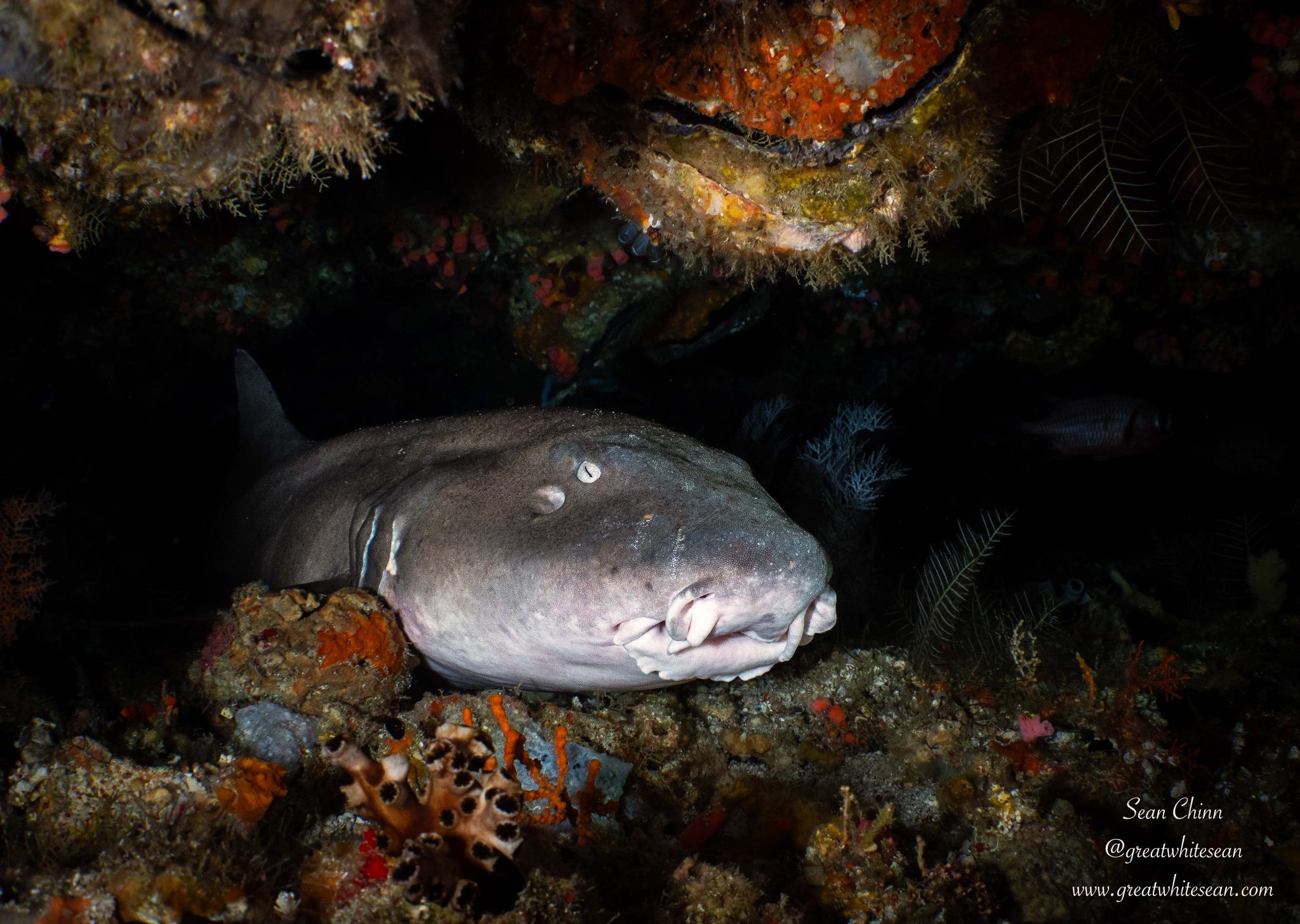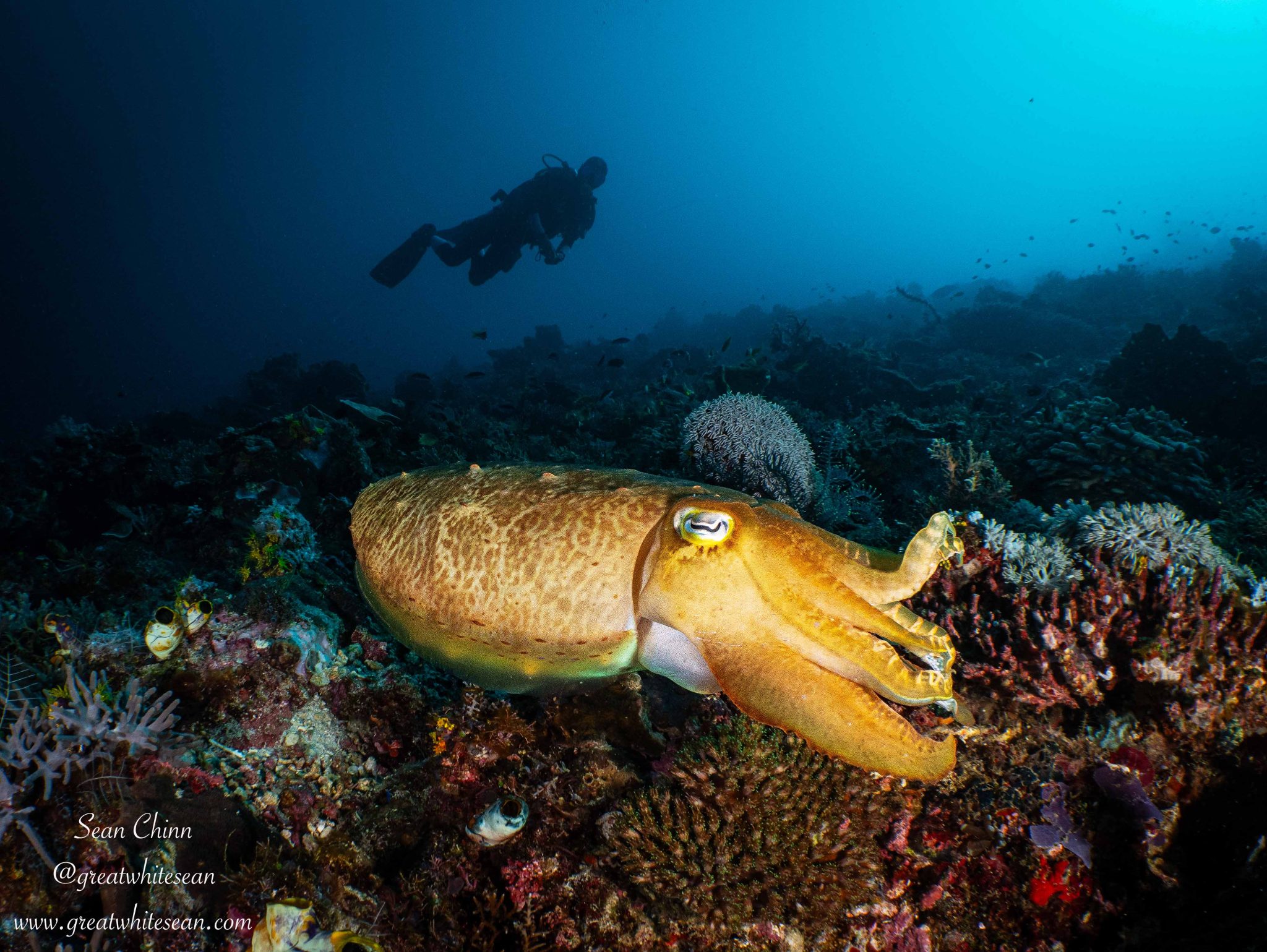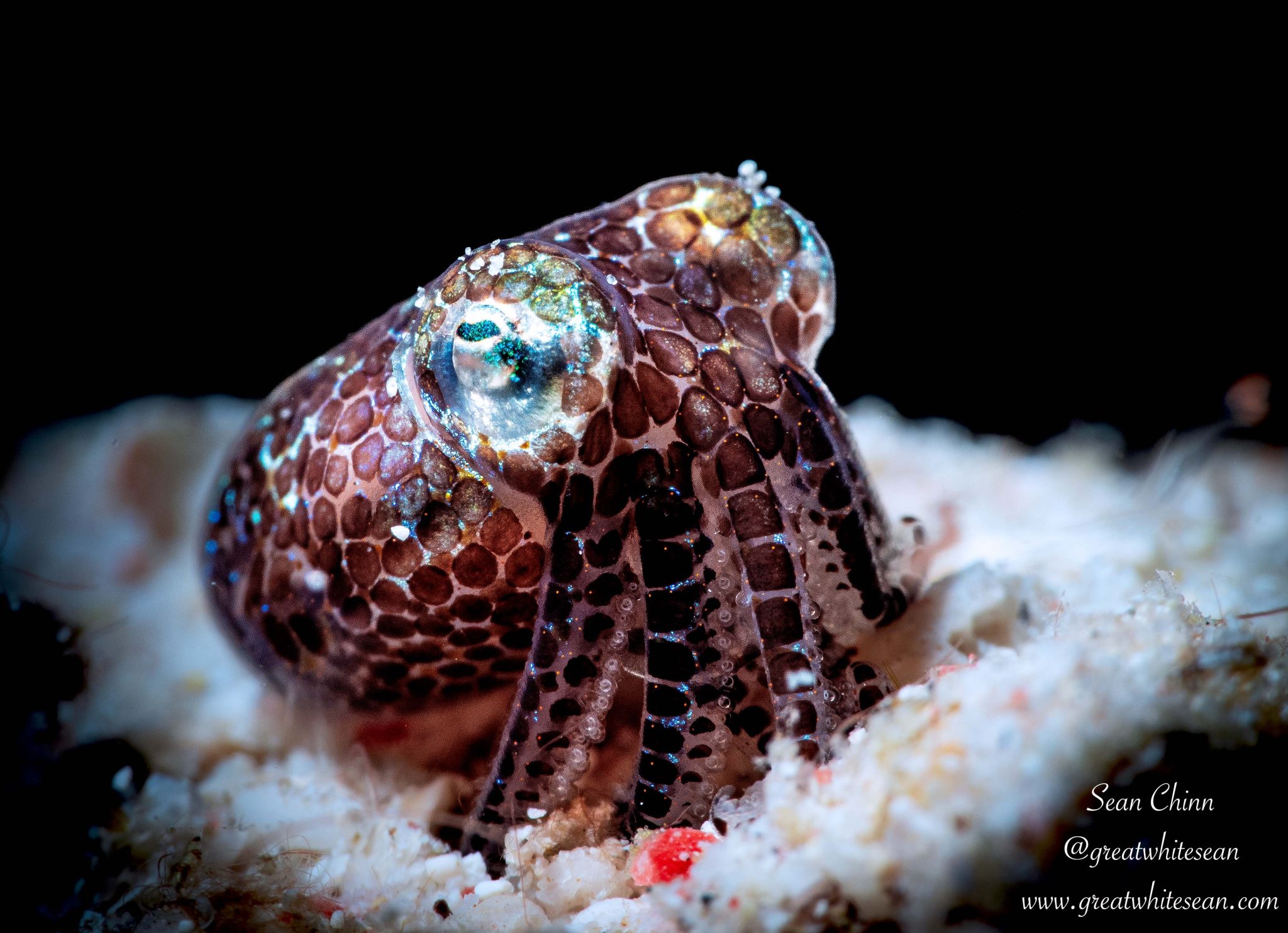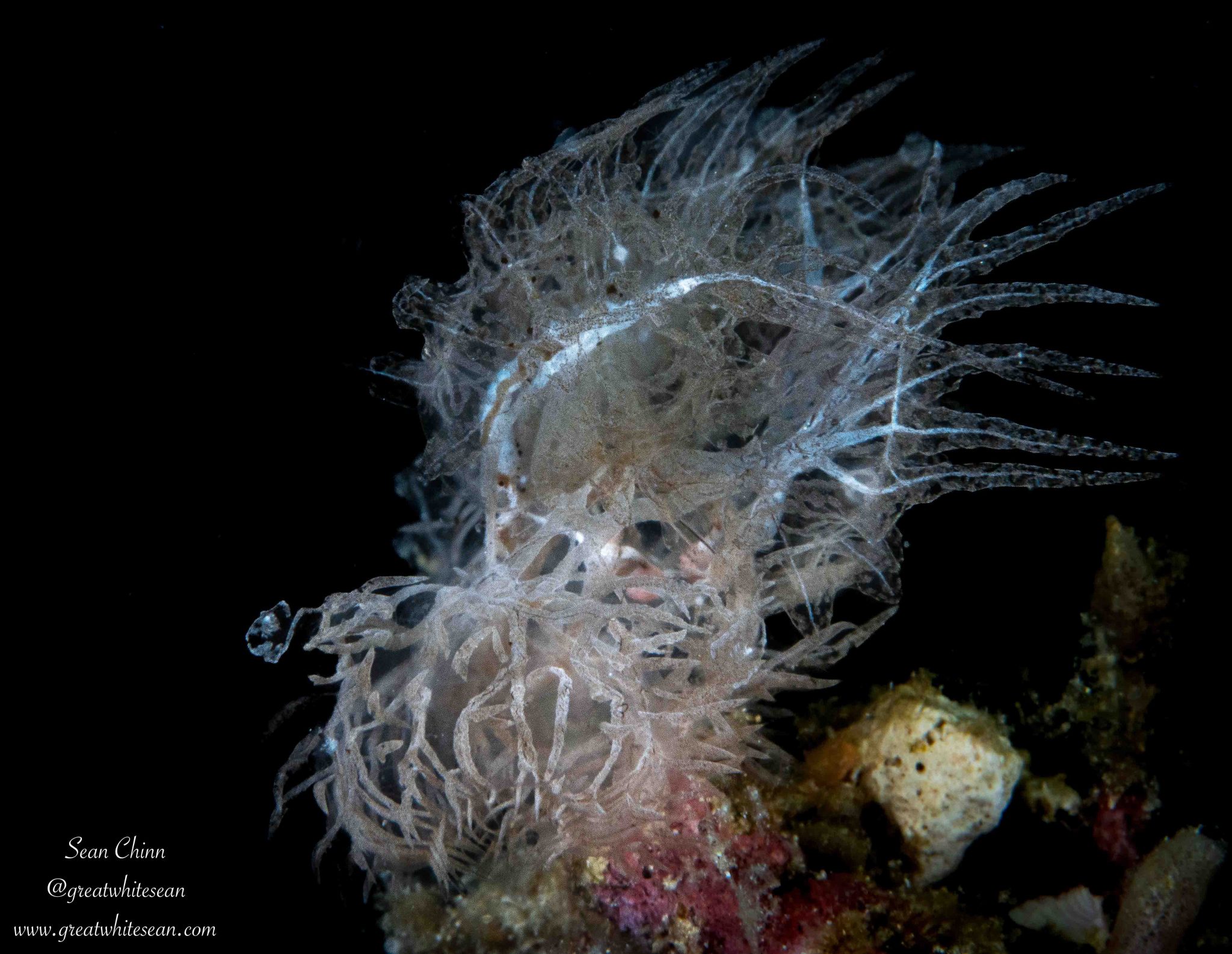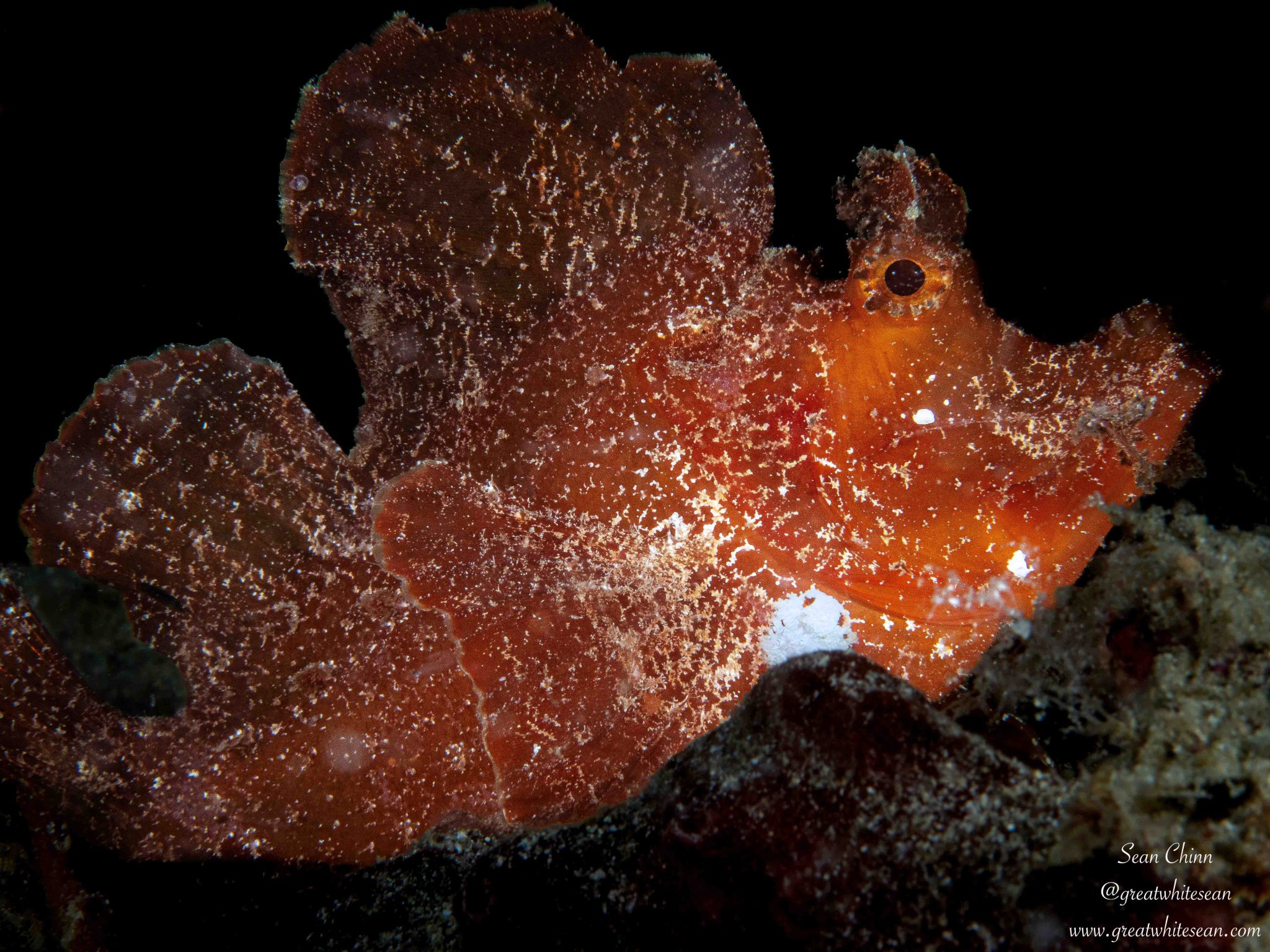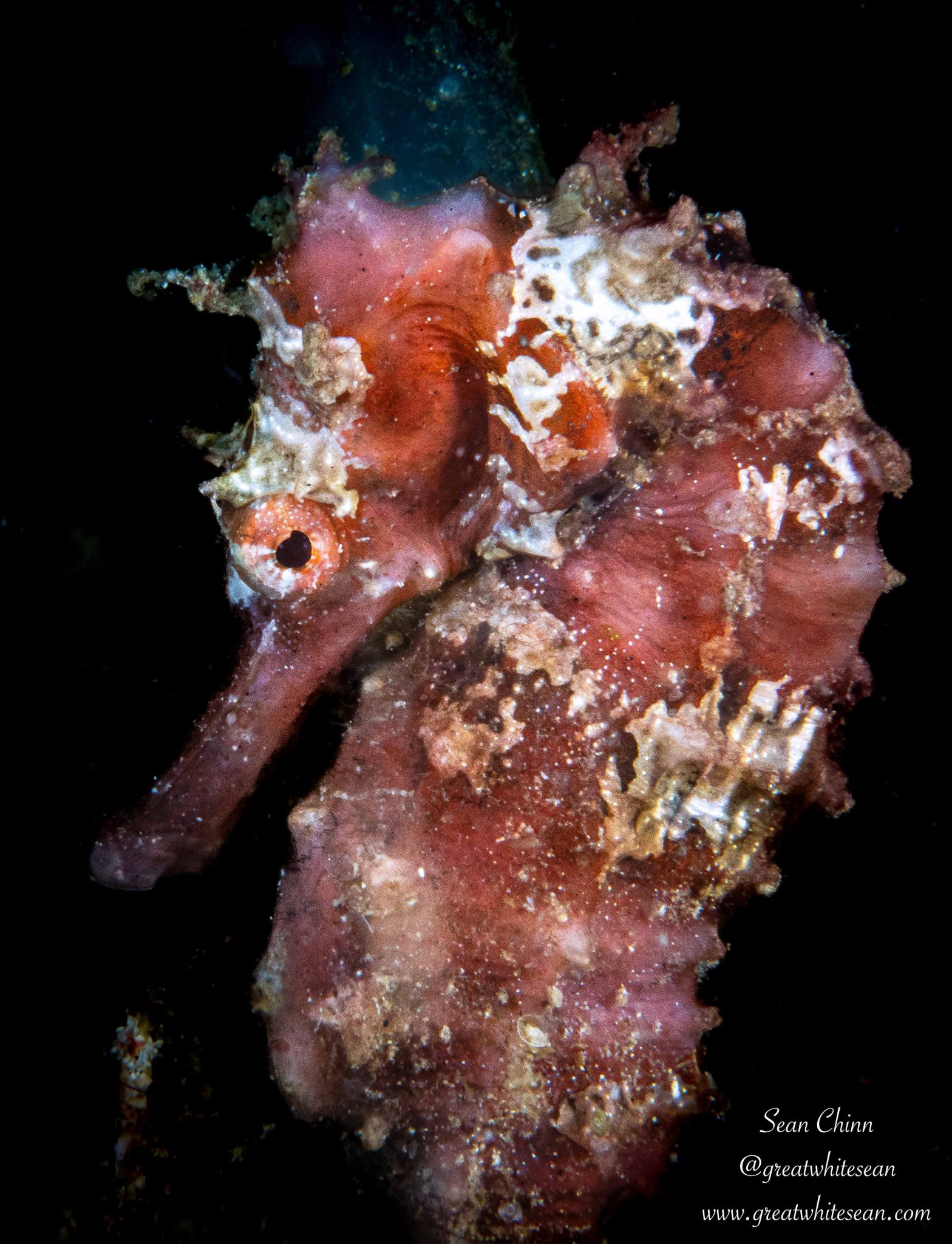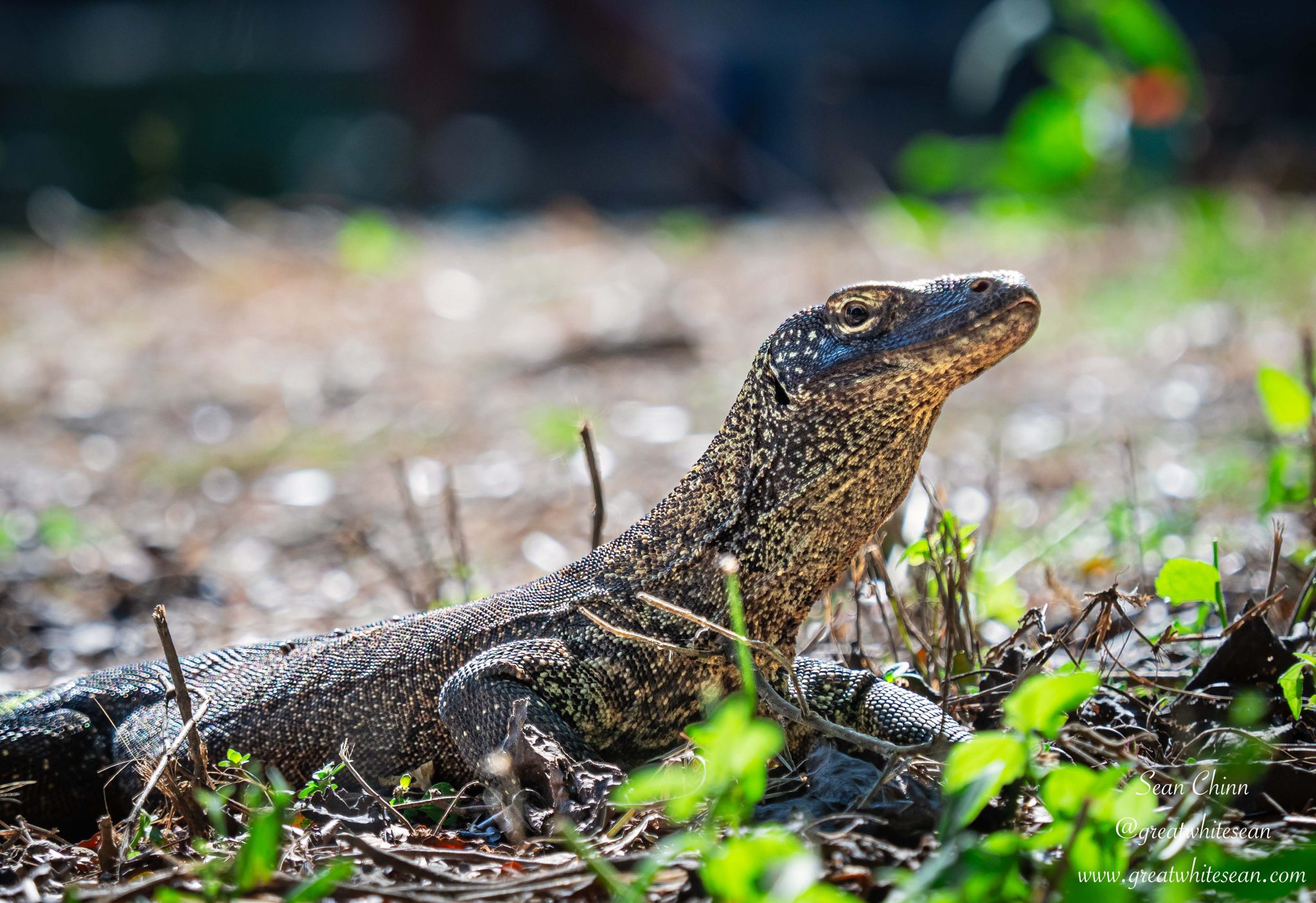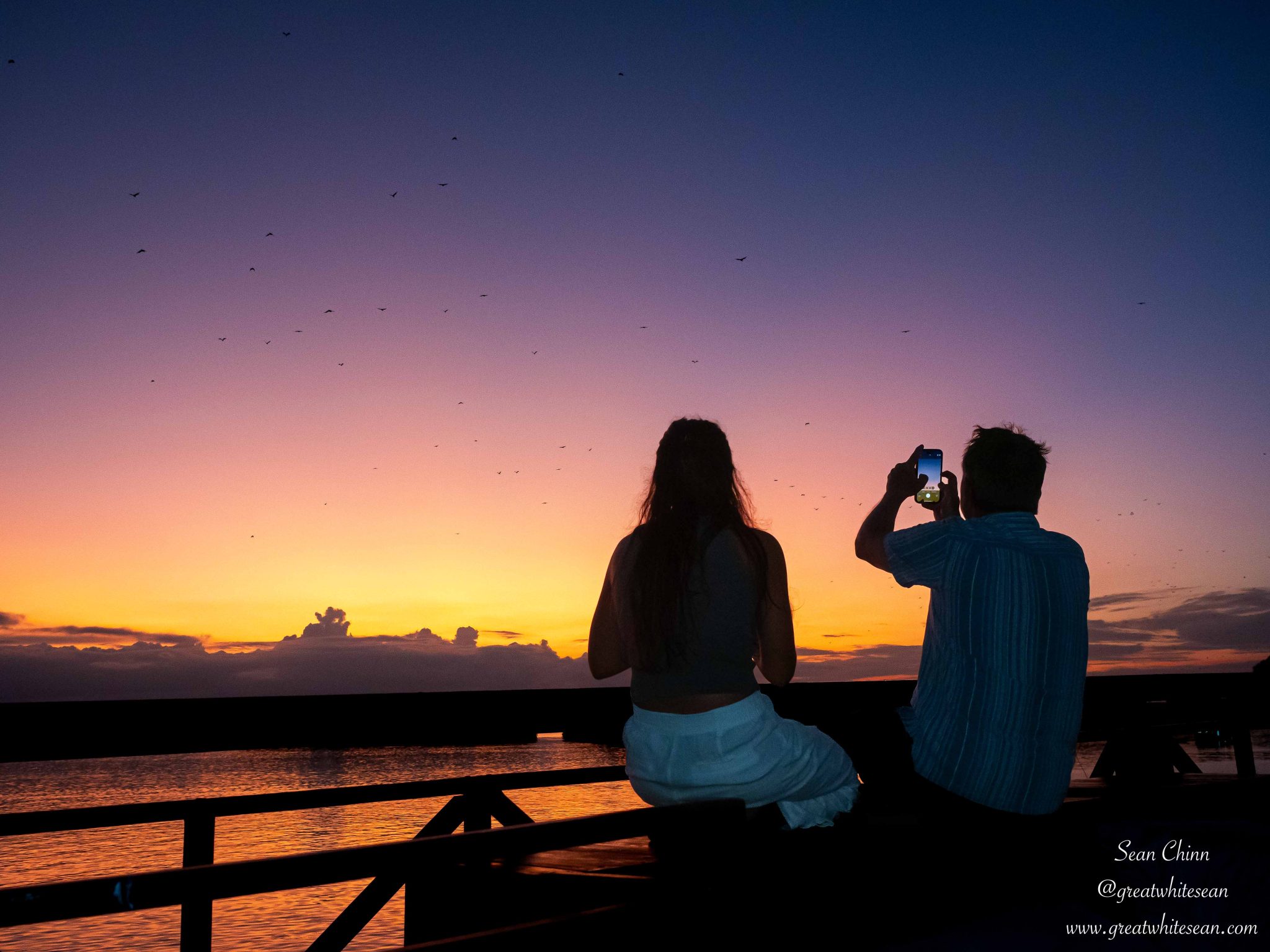News
A Welcome Return (Part 2)
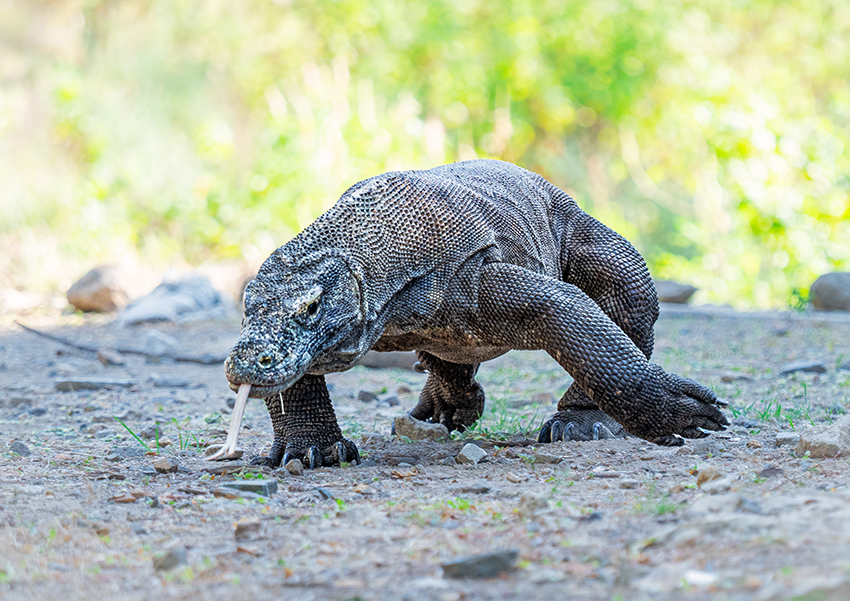
I’m hoping by now you would have read Part 1 of my ‘A Welcome Return’, all about joining La Galigo Liveaboard once again, but this time exploring the delights of Komodo National Park.
The trip was really starting to hot up, with great scenery above the water and great encounters underwater. It was the little critters that were stealing the show and it was about to get even better. Here is how the rest of the trip panned out…
I was more than psyched for day 3. With a dive full of life to start with at ‘Castle Rock,’ followed by what should be an adrenaline-fuelled drift at ‘The Cauldron’ aka ‘Shotgun’, It was sure to be an adventure. Sure enough, once we descended along the pinnacle at ‘Castle Rock’ to around 25 metres, we were surrounded by an abundance of fish life. Numerous banner fish, schools of fusilier and surgeonfish swam in unison, while the odd friendly batfish would come to check each diver out. A distant school of jackfish were joined by the odd tuna and a circling whitetip reef shark to add the predators to the list of life. It was such fun floating amongst the amount of life before letting the current take us onto the reef. A few macro delights were waiting, as a blue ribbon eel and leaffish were spotted, alongside a friendly hawksbill turtle. This was certainly a dive that didn’t disappoint.
It was time for ‘The Cauldron,’ a notorious dive that struck fear into the hearts of some and was legendary to others. Tales of masks flying off in the current made for a little nerves before descending, but excitement from others about how the drift can shoot you through the channel between Gili Lawa Laut and Gili Lawa Darat. However, it was a little different for my dive and the current was fairly mild in comparison to what I expected. It still had enough current for a nice push through the channel and also provided some great marine life encounters. Another new shark species for me was a major highlight, as I finally got to see and photograph a bamboo shark. It was also the site for our only manta ray encounter of the trip. Unfortunately, the manta had passed my group before we saw it and we only got the tail end as it glided through the current away from us. A smaller mobula ray was also spotted at a distance, and a small school of bigeye trevally before… you guessed it… yet another friendly hawksbill on the safety stop.
Day 3 was becoming the best diving day so far and I’d say the next dive at ‘Golden Passage’ was my favourite wide angle dive of the trip. I just love cephalopods and am a big fan of cuttlefish. Three rather large broadclub cuttlefish at the very start of the dive were more than welcome and provided great photography opportunities. We then had an amazing drift along the passage with a bit more oomph than ‘Shotgun’. More hawksbill turtles along the way, a sleeping bamboo shark in the overhangs, and a dancing school of fusiliers provided extra marine life joys. We finished the diving day with a night dive at ‘Gili Lawa Darat Bay’. Wow!!!! Once again, critters stole the show, along with a rather successful bobtail squid snooted photography shoot for me. Devil scorpionfish, nudibranch, flatworms, shrimps, squat lobsters and juvenile harlequin sweetlips made sure every single minute was interesting.
After a short documentary about Komodo dragons on the evening of day 3 to get us excited for seeing them, I was definitely more than excited! Day 4 was a day of giving it our best shot to get some great manta ray action. We started with another beautiful pinnacle reef around ‘Crystal Rock’. Small school of batfish, Napoleon wrasse, whitetip reef sharks, a blacktip reef shark and lion fish greeted us, before we moved on to try for mantas once again. Back to ‘Karang Makassar’ and a drift along the sand and rubble, passing small sections of coral formations that would act as cleaning stations. Unfortunately, we were once again unlucky with our manta ray sightings but this dive did deliver more interesting encounters: A bamboo shark resting out in the open before swimming off, green sea turtles, hawksbill turtles and, once again, a large broadclub cuttlefish.
A final day dive at ‘Mauan’ in the hope of seeing mantas wasn’t much to write home about in this instance. We gave it our best shot with the mantas and that’s all we can ask of the accommodating crew onboard. Unfortunately, wildlife doesn’t always play ball and on another trip you could have some of the best manta ray action of your life. However, the final night dive of the trip more than made up for it. Wow, wow, wow!!! What a dive! With some of the most unique critters you can find. So much so, I have been asked to keep the dive site quiet in fear of the information getting to the wrong people and bad practice being at play. A shame it has to be that way but a necessity at times. While numerous species of nudibranch were spotted on the dive, it was the elusive ghost melibe that stole the show. A transparent nudibranch made up of white lines, giving it a skeletal appearance that was hard to photograph but soooo exciting to see!
The unique critters didn’t stop there, as another highlight macro critter – the paddle flap scorpionfish – was spotted to the excitement of the guides and cruise director Fareez, who screamed and danced (with excitement!) underwater. Definitely a sought-after critter in the underwater photography world, and we had two join us for the dive. There was a lot of sand and sediment in the water, making it difficult for photography and I wasn’t completely ecstatic with the shots I got, but loved to see another new-to-me species. But guess what? The fun didn’t stop there, as a black frogfish was sitting under some broken coral just next to the scorpionfish. WHAT A DIVE!!!!!!
After such an incredible final night dive, the final day also finished the trip in incredible fashion, ensuring the need to return was firmly there. Starting with a first dive at Pengah, where a banded sea krait hunting throughout the reef was a great start, and more colourful coral formations around the pinnacle, with amazing hard coral just below the surface. It was a dive for wide angle and macro, as ladybugs, different nudibranch, and a leaf scorpionfish were found. As well as a large octopus working its way through the reef before hiding when we locked eyes. The final dive really put the icing on the cake. It was a macro dive amongst sand and rubble: numerous nudibranch again dazzled, with the ‘Pikachu’ nudi my favourite. Peacock mantis shrimp, spearing mantis shrimp, longhorn cowfish, orangutan crab, squat lobster and shrimp ensured a special dive before the grand finale – a thorny seahorse. What a dive and what diving for my five days in Komodo National Park.
Well, the diving might have been over, but the trip certainly wasn’t. In fact, it was time for one of the tours I’d been looking forward to the most. Time to see Komodo dragons on Rinca Island. As much as I love liveaboards, it’s always nice to get back on land. A jetty led us onto a boardwalk path, where within minutes we laid our eyes on our first dragon, before getting closer to the information centre and seeing the big male that commands the area. Sprawled out on the floor, his size was immense. A great start but I longed for those close encounters and not looking down from a platform.
We were soon through the information centre and onto the wild ground to start our very short trek. We didn’t need to go far at all as a resting large female was just next to the information centre, followed by a small juvenile who came running through stealing all the attention. It was a little cutie and fun to see and photograph. Being a photographer, you always have images in mind before you go somewhere. I was desperate to get a large dragon postured up facing or walking to the camera. I quickly realised that these were lazy animals in the midday sun (as am I). It’s too hot and they risk overheating if they’re too active. I began to lose hope for the shot I wanted, as we trekked a short while up the hill and found another resting female. Amazing to see once again before it was all too soon ready to leave. I could have trekked so much more of the island.
As we waited around the outside seating area of the information centre, I was going through my shots with Fareez and explaining the shots I was hoping for. He said maybe I would get lucky while we waited for the others to explore the gift shop. I knew I didn’t have long. Suddenly, some commotion back outside on the wild ground caught my attention. DOUBLE JACKPOT!!! I went flying out of the gate and there was a dragon walking directly towards me. Postured up, showing off its muscles, only made better by the fact that it was the huge male that swaggered into his arena. Showing off to his adoring crowd. I was completely made up and thankfully got some shots I was happy with. He slowly walked around using his tongue to taste all the flavours, before finally slumping on the ground, sprawled out in the shade.
My trip was now complete, or so I thought. I got what I wanted and was happy to return to my family completely content (apart from losing my drone that is!) That was until the grand finale, the little extra I didn’t know I needed, but it’s always those moments that separate a great trip from an unbelievably fantastic trip. The little extras that make you long to return.
Moored up at Pulau Kalong under an amazing sunset, we waited for the show to start. A spectacle that only nature can deliver soon ensued, as thousands upon thousands of flying foxes left their daytime roost on the island. Engulfing the orange sky with black silhouettes akin to the batman sign. They just kept coming and coming for the next hour or so before we enjoyed an amazing BBQ dinner on the top deck and an incredible show of songs and dance from the amazing crew. Another fantastic trip onboard La Galigo and I can only hope I’ll be back soon.
For more information about diving in Komodo:
Sean Chinn Instagram: @greatwhitesean
Email: sean@greatwhitesean.com
Whatsapp: +62 812 2000 2025
Marine Life & Conservation
IUCN Spotlights Green Fins at Bali Ocean Days 2025, Calling for Stronger Business Model in Marine Conservation

IUCN (International Union for Conservation of Nature) Global Ocean Director, Minna Epps, has spotlighted Green Fins Indonesia along with a call for stronger business models that sustain marine conservation. Speaking at the inaugural session of Bali Ocean Days 2025 held on 7-8 February, Epps emphasised the need for sustainable financing to support and scale marine conservation initiatives such as Green Fins.

Activities earlier in the week with the Coral Triangle Center in Sanur and Ceningan Divers in the Nusa Penida Marine Protected Area shaped the IUCN Ocean Director’s message at the conference and showcase, aligning with the theme of the blue economy and impact finance to sustain marine ecosystems.

“Tourism has such a big impact on marine biodiversity, and we need it to adhere to a certain code of conduct,” Epps said. “That is why through our funding facilities, we worked with The Reef-World Foundation advancing Green Fins so dive operators can become certified with standards. But this kind of initiative has been around for a long time and it’s also a tool used to improve [MPA management], but it needs to come with a business model. I also believe in market-based instruments to evolve this programme.”

IUCN’s visit is part of their Blue Natural Capital Financing Facility (BNCFF), which supports at least 21 projects around the world, building the business case for investing in the future of our ocean.
In Indonesia, the project supported by IUCN was developed in partnership with The Reef-World Foundation, the Coordinating Body on the Seas of East Asia (COBSEA) and the Coral Triangle Center, which serves as the local implementing organisation for Green Fins. The initiative engages marine tourism businesses through voluntary sustainability certification based on the only internationally recognised environmental standards for diving and snorkelling operations. Green Fins’ activities aim to reduce negative environmental impacts associated with marine tourism activities as well as improve the management of marine protected areas.

IUCN’s promotion of Green Fins in Bali Ocean Days signals the need for greater private sector engagement in marine conservation across Indonesia and beyond.
Investors, donors, marine tourism operators and stakeholders looking to support scalable marine conservation solutions are encouraged to explore opportunities with The Reef-World Foundation, the international coordinator of the Green Fins initiative. To learn more about sustainable marine tourism and how to get involved, visit www.reef-world.org.

About Reef-World
The Reef-World Foundation is a registered UK charity which delivers practical solutions for marine conservation around the world. The charity promotes the wise use of natural resources – particularly coral reefs and related ecosystems – for the benefit of local communities, visitors and future generations. It is dedicated to supporting, inspiring and empowering governments, businesses, communities and individuals around the world to act in conserving and sustainably developing coastal resources.
Reef-World leads the global implementation of the UN Environment Programme’s Green Fins initiative, which focuses on driving environmentally friendly scuba diving and snorkelling practices across the industry globally. As such, the charity provides low-cost and practical solutions to local and industry-wide environmental challenges associated with the marine tourism industry. It provides education and capacity-building assistance to empower environmental champions (within the diving industry, local communities, authorities and governments) to implement proven coastal resource management approaches.
Visit www.reef-world.org to learn more or follow them on Facebook, Instagram and X.
About Green Fins
Green Fins is a proven conservation management approach – spearheaded by The Reef-World Foundation in partnership with the UN Environment Programme – which leads to a measurable reduction in the negative environmental impacts associated with the marine tourism industry. The initiative aims to protect and conserve coral reefs through environmentally friendly guidelines that promote a sustainable diving and snorkelling tourism industry. It provides the only internationally recognised environmental standards for the diving and snorkelling industry and has a robust assessment system to measure compliance.
Green Fins encourages and empowers members of the diving industry to act to reduce the pressures on coral reefs by offering dive and snorkel companies practical, low-cost alternatives to harmful practices – such as anchoring, fish feeding and chemical pollution – as well as providing strategic training, support and resources. By reducing the local direct and indirect pressures tourism puts on coral reefs, it helps make corals healthier and more resilient to other stresses such as the effects of climate change. Look for the Green Fins logo when booking your next dive trip.Visit www.greenfins.net to learn more or follow the initiative on Facebook, Instagram and X.
News
Filming 360 in The Bahamas

In December 2024, the Shark Trust had a very special opportunity to film sharks and rays in The Bahamas. Frogfish Photography are the Bahamas Dive Ambassadors for the UK. And Caroline, Deputy Editor at Scubaverse, is the Marketing Manager at the Shark Trust. So, when the need arose to film footage of several species of shark and ray for a new Shark Trust project, The Bahamas seemed the perfect fit. A huge thank you is needed here to the Bahamas Ministry of Tourism. As they stepped in to fully support the trip both financially and practically. Ensuring that the filming expedition ran smoothly, and that we got as much time as possible in the water with sharks and rays, during the 10 day, 3 island trip.

The Bahamas is famous for its sharks and rays. Divers flock there to experience getting up close to a range of species. Our itinerary saw us visit Nassau, Bimini and Grand Bahama. It packed in as many in-water experiences as possible and had us dive, snorkel, and even take a submarine to experience them in a variety of different habitats and to capture them on film. We saw 148 sharks and rays from 8 different species (all of which have been logged on the Shark Trust Shark Log!).

But why were we there? The expedition was designed to fulfil the needs of two new projects being launched by the Shark Trust in 2025. The filming done underwater on this trip was the start of creating OneOcean360: A Shark Story. A new 360 immersive experience designed primarily for immersive domes and planetariums. The film will be the nearest experience to getting in the water with sharks and rays without getting wet! It will bring the world of sharks to an audience that may never get the chance to experience it first-hand. A Shark Story aims to deepen people’s understanding of sharks, uncovering and illustrating why they are so wonderful as well as being vital to marine ecosystems.
The film is being made in collaboration with Real Immersive. Also based in Plymouth, they have an immersive dome and are providing the technical expertise behind creating this unique experience. Reviewing the footage in the dome has been an invaluable part of the process. Both inspiring the team and allow us to refine the filming techniques to suit this immersive theatre.

You might imagine that we are using expensive cameras and even more expensive housings. But this is not the case. The entire project is being filmed using Insta360 X4 cameras. With only a few simple additions to the standard dive setup. The INON weight plate allowed us to attach this camera to a dive weight, set it down on sand or wreck, and then swim away and let the sharks be the stars. And the results are very exciting. The film will be ready this autumn. It will be accompanied by an educational pack for teachers to take away after school trips to see the film. Encouraging all those that see it to continue learning about these incredible animals.
You can support the creation of OneOcean360: A Shark Story by heading to the crowdfunder page and donating or selecting a reward.
https://www.crowdfunder.co.uk/p/a-shark-story
Read about the shark and ray dives we did on Nassau, Bimini and Grand Bahama in our next blog post coming soon on Scubaverse.
-

 Gear Reviews1 month ago
Gear Reviews1 month agoGear Review: SurfEars 4
-

 News3 months ago
News3 months agoSanta Divers take the Plunge for Charity
-

 Marine Life & Conservation2 months ago
Marine Life & Conservation2 months agoPaul Watson Released as Denmark Blocks Japan’s Extradition Bid
-

 Blogs2 months ago
Blogs2 months agoJeff Goodman Launches Underwater Moviemaker Course with NovoScuba
-

 Blogs2 months ago
Blogs2 months agoExperience Malta and Gozo in 2025: A Paradise for Divers and Culture Lovers
-

 News2 months ago
News2 months agoDive into Adventure: Limited Space Available for January Socorro Liveaboard Trip with Oyster Diving
-

 Blogs3 months ago
Blogs3 months agoThe Benefits of Underwater Photography Workshops
-

 Blogs3 months ago
Blogs3 months agoDiscover Curaçao with the Ultimate Dive Vacation Guide – 2024 DEMA Special Edition


